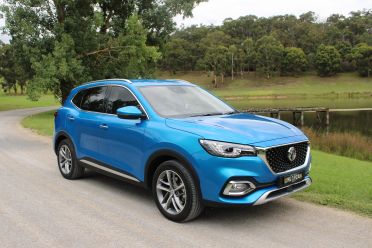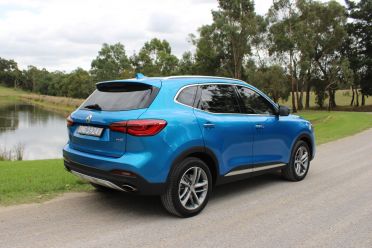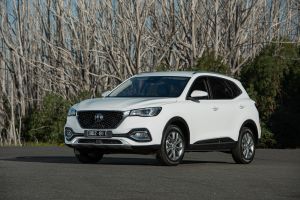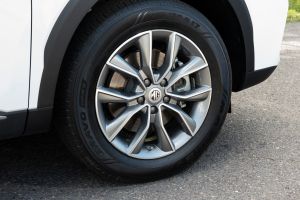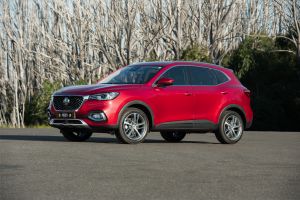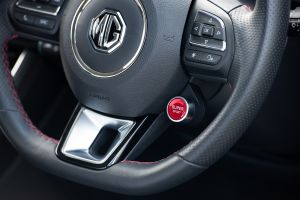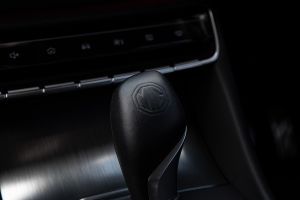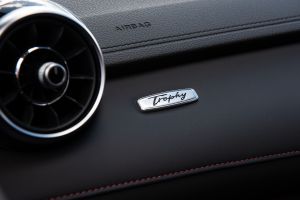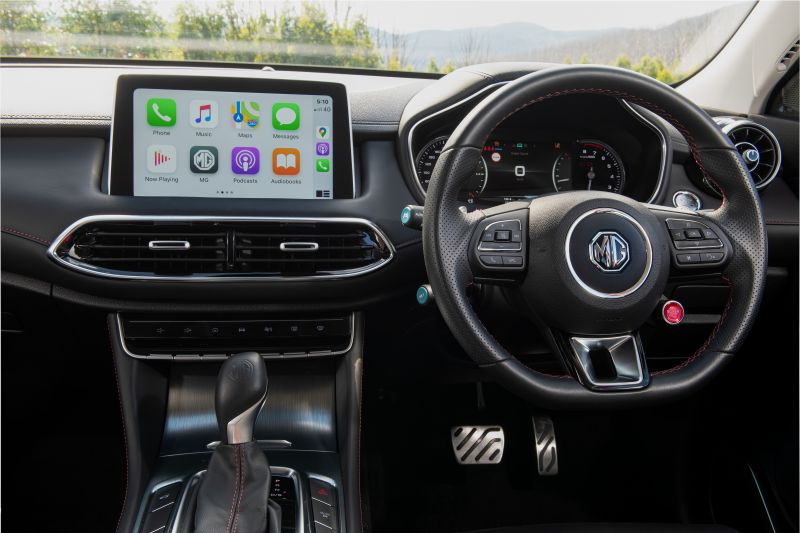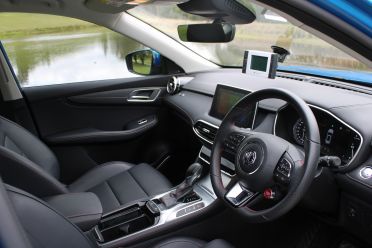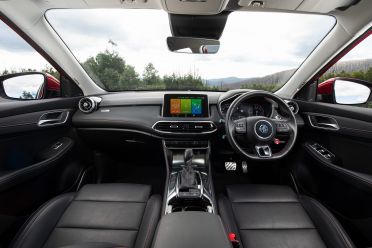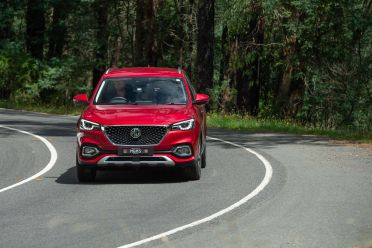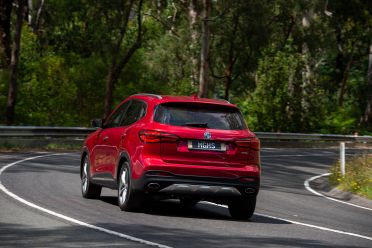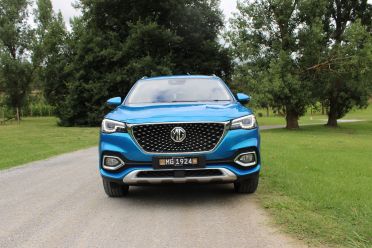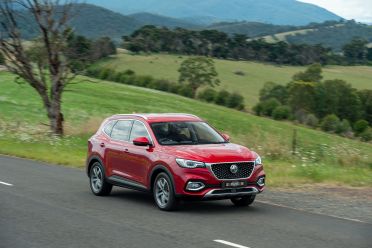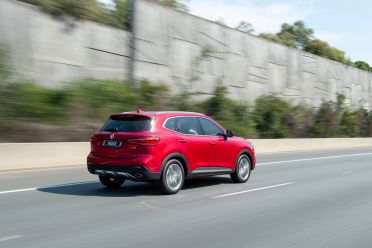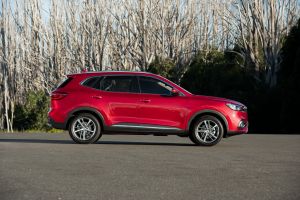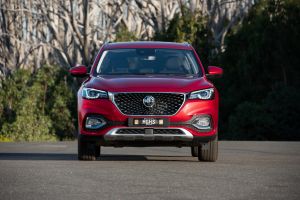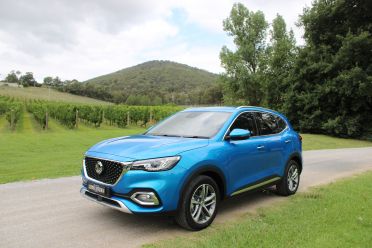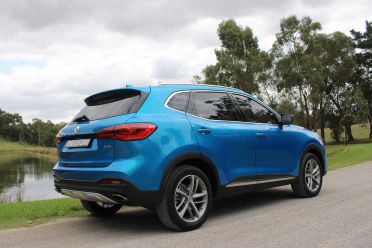Introduction
MG has enjoyed a meteoric rise in Australia since its relaunch in 2016.
Last year, for example, sales were up 179 per cent.
That was largely on the back of the small MG ZS SUV and the 3 hatchback – the defunct mid-sized GS SUV never really connecting with Aussie buyers despite its sharp looks and keen pricing.
Which is why there’s a new mid-sized SUV from MG. The MG HS is here to do what the GS couldn’t and take the fight to stalwarts in Australia’s hottest segment, including the Toyota RAV4 and Nissan X-Trail.
“We’re not suggesting we’re the best but we’re saying we’re better than 80 per cent of what’s out there,” Danny Lenartic, MG Australia director of marketing, said at the launch. So he’s confident.

How much does the HS cost?
The first volley from MG is the HS’s price.
The base HS Vibe is priced at $30,990 drive-away while the HS Excite is priced at $33,990 drive-away.
If the price is right to you, you can book a test drive or visit your local dealer to take the next steps.
It’s worth keeping an eye on the official MG offers page for any monthly deals they may be offering.
Is the HS safe?
In addition to its extensive suite of safety features, MG’s new mid-size SUV also boasts a five-star ANCAP rating.
All HS models also come with the MG Pilot safety suite.
This comprises autonomous emergency braking, adaptive cruise control, lane departure warning, traffic jam assist, intelligent speed assist, intelligent cruise assist, front collision warning, intelligent headlamp control, blind-spot monitoring, lane change assist and rear cross-traffic alert.
MG has a break down of all the safety features and safety tech offered in the HS in their specifications sheet which you can download via their website.
What do you get?
The HS Vibe comes standard with a 10.1-inch touchscreen infotainment system with Apple CarPlay and Android Auto, as well as front and rear fog lights, push-button start, proximity entry, an electric parking brake, leather-wrapped steering wheel, a reversing camera and rear parking sensors.
Next up is the flagship (for now) HS Excite.
It adds paddle shifters, adjustable ambient lighting, satellite navigation, LED headlights, rain-sensing wipers, dual-zone automatic climate control and a power tailgate.
A third, higher trim level is coming this month, while next year will bring both a plug-in hybrid and a turbocharged 2.0-litre four-cylinder engine variant with all-wheel-drive.
The HS’s rivals struggle to match it in feature content – you have to spend over $40,000 to get a Hyundai Tucson with adaptive cruise control.
Perhaps most importantly for style-conscious buyers, the base HS Vibe doesn’t look like a base model.
There are no steel wheels here, with MG instead fitting 17-inch alloy wheels with a similar design to the 18-inch wheels of the top-spec Excite.
You can find examples of the range of colours available, and a side by side list of inclusions available within the official HS specifications sheet.
What’s the HS like inside?
The HS’s interior also impresses at this price point.
Inside, both trim levels feature leatherette upholstery with red stitching when most similarly-priced rivals use cloth trim.
The entire dash top, right up to the windscreen, is covered in tactile, soft-touch plastic, with faux leather trim swathed across the front of the dash and on the sides of the centre console.
Perhaps the classiest touch is the brushed metal trim at the base of the centre stack.
The 10.1-inch infotainment system is well-sized for a low-$30k mid-size SUV. Base model rivals mostly have 7.0 or 8.0-inch screens.
The reversing camera is of a high resolution, while the metallic paddle shifters of the top-spec Excite feel lovely and tactile. Likewise the metallic switches below the touchscreen that serve as redundant buttons for the infotainment, though there isn’t one for the satellite navigation.
Interior space is hard to fault with a particularly comfortable rear seat thanks to a 2722mm wheelbase, 32mm longer than a Toyota RAV4’s and 52mm longer than a Hyundai Tucson’s.
Rear air vents and two rear USB ports are standard on all HS models, as are three top-tether and two ISOFIX anchor points for child seats.
Boot volume is 463L – about the same as a Kia Sportage, albeit less than a RAV4 or Honda CR-V. With the second row folded, cargo volume expands to a sizable 1287L.
Excite models have a badge reading Trophy on the passenger side of the dash, a holdover from the Chinese market HS where that’s a trim level name.
The glovebox door was slightly askew but there were otherwise no build quality issues to be seen.
Make no mistake, this is a particularly nice interior for a low-$30k mid-size SUV.
There are some annoying idiosyncrasies with the HS’s technology, however.
The touchscreen, for example, is slow to react to inputs, though its display is bright and legible.
More annoying were the chimes. When the vehicle goes below 60km/h the lane keeping assist deactivates, sounding a chime. Every. Single. Time.
The warning lights for the blind-spot monitoring system are inside on the A-pillar, but they’re not angled towards the driver and are too faint. Why not put them on the mirrors like on most cars?
The car will chime repeatedly when you’re entering a built-up area or school zone, warning you the speed limit is about to drop.
It’ll still do this even if the speed limit assist has detected road works ahead of the slower speed limit, leaving you in a strange situation where the car is chiming about a 50km/h speed limit ahead when you’re already going 40km/h.
You also mightn’t realise what the chime is for, as it doesn’t appear to be displayed anywhere other than on the navigation screen.
The quirks continue. Some of the warnings in the digital instrument display are too small to read clearly – a yellow triangle appeared once and disappeared before I could figure out what it was.
The cruise control buttons are also located on a stalk behind the left-hand side of the steering wheel and, although MG isn’t alone in putting cruise on a stalk, it’s not as intuitive as wheel-mounted buttons.
You do get used to it, and it helps the cruise control display in the instrument cluster is clear and legible.
Annoyingly, even after you deactivate the cruise control, the digital display won’t change back to the digital speedometer. Instead, it continues to display the speed the cruise control was set to.
The HS’s Intelligent Speed Assist goes beyond the regular speed assist functions and adjusts the speed of the car accordingly. It takes some getting used to as you’ll encounter resistance should you try to accelerate further.
Unfortunately, it won’t work in conjunction with the adaptive cruise control. You’ll need to pick one or the other. These are minor bugbears, however, and fail to detract much from an otherwise classy cabin and impressive suite of technology for this price point.
You’ll be able to find more information and official pictures of the interior within the MG HS website.
What’s under the bonnet?
For now, all HS models come with a turbocharged 1.5-litre four-cylinder engine producing 124kW of power and 250Nm of torque and mated to a seven-speed dual-clutch automatic transmission.
Its power output is similar to base rivals like the Mazda CX-5, Mitsubishi Outlander and Nissan X-Trail, which use larger capacity naturally-aspirated engines.
Those rivals have significantly less torque, however.
The HS’s stout torque figure is bested only by the moribund Holden Equinox, with 275Nm from a similar turbocharged 1.5-litre, and the Haval H6, which produces 315Nm from its larger turbocharged 2.0-litre.
If you’re looking for further details on engines specifications, you’ll find these within the official HS specifications sheet.
How does the HS drive?
Out on the road the powertrain is polished, the dual-clutch automatic shifting smoothly and rarely getting stuck in the wrong gear.
Only once or twice did it get caught out, including one instance where I was slowing down at a roundabout and then taking off again quite quickly.
Shifts are a little less smooth in the Excite’s Super Sport mode, which also adjusts the steering weight.
To activate Super Sport mode, you press a big red button towards the bottom of the lovely, chubby leather-wrapped steering wheel.
You won’t miss the button – it looks like it’s for an ejector seat in a Bond car.
The Super Sport option is a misnomer. This is a comfortable, compliant SUV but the drive route’s tight switchbacks and hairpin turns left the HS feeling out of its element.
Tight corners result in a lot of understeer and body roll, while the steering is rather light.
The often-rutted country roads of the test route, however, demonstrated the HS’s admirable ability of smoothing out even rough surfaces.
Only on the most severely disintegrated of country roads did the HS slip up and lose some composure. The HS is an entirely pleasant SUV to drive at a cruise.
Wind noise is well contained and the cabin is impressively quiet, but for the whistle of the turbocharger. Its noise isn’t obnoxious, however.
Even under heavy acceleration, the cabin was nicely hushed, though there was one persistent if unobtrusive noise that proved hard to identify.
Sounding like gravel in the exhaust pipe, the noise appeared whenever I accelerated the HS. It could be isolated to just this press car, though, as the issue didn’t appear to affect any other cars in the convoy.
If you’re interested to find out how the HS drives for yourself, you can book yourself in for a test drive via the MG website. Or find your local MG dealer to get behind the wheel.
How much does the HS cost to run?
The HS sips a claimed 7.3L/100km on the combined cycle, with 9.2L/100km in the city and 6.2L/100km on the highway.
All of MG’s range have a seven-year, unlimited kilometre warranty and seven years of roadside assistance. Marketing director Danny Lenartic says capped price servicing is coming soon.
CarExpert’s take on the 2020 MG HS
Although MG proudly uses “Since 1924” as its tagline, the brand only recently reappeared in Australia.
It’s having a better run of luck than before, and the HS should further grow the brand’s market share here.
In terms of interior presentation and safety equipment, the new HS blows the old GS away and makes a credible case against established rivals.
Add one of the best warranties in the business and the MG HS isn’t just “good for a Chinese car”, it’s good, period.
There’s still room for improvement, though, particularly with the calibration of its safety equipment and infotainment system.
Is it better than 80 per cent of what’s out there at this price? A comparison test may be the only way to prove that conclusively but Mr Lenartic could have a point.
Like to Know More?
- View the latest MG offer
- Visit the official HS page on the MG website
- Book yourself a test drive
- Download the official HS specifications sheet
- Find your local dealer

